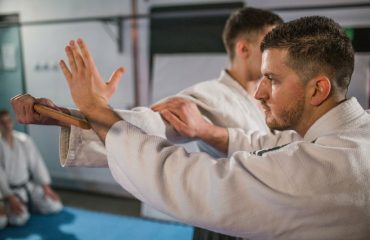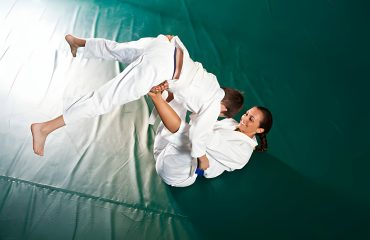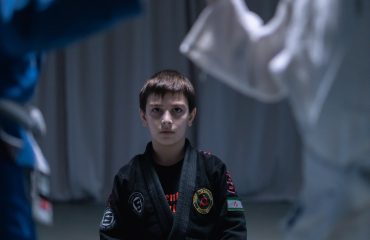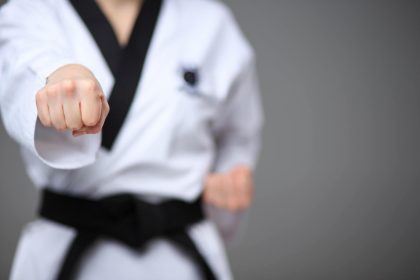
In the world of popular martial arts, earning a black belt is often seen as a pinnacle of training and dedication. Jiu-Jitsu, a martial arts with deep roots and a rich history, is no exception. At NOCO Jiu-Jitsu and Self-Defense, we often encounter enthusiasts eager to understand the path toward achieving a black belt in BJJ (Brazilian Jiu-Jitsu). This article aims to clarify that progression, providing insight into what it takes to reach this esteemed level.
Understanding the Path to a Black Belt
The path to a black belt in BJJ is unique for each individual, influenced by various factors such as frequency of training, physical ability, and dedication to martial arts. Typically, it’s not just about the hours put in on the mat; it’s also about the growth, learning, and personal development that happens along the way. Black belts often emphasize the importance of focusing on the process rather than just the destination. White belts should understand that the path to a black belt is a marathon, not a sprint. Developing martial arts skills takes time and consistent effort. Achieving a black belt in many martial arts requires really intensive training and hard work.
A crucial element of this path is the person’s capacity to adjust and surmount obstacles. Earning a black belt in Brazilian Jiu-Jitsu involves intense and strenuous training, challenging both the body and mind. It demands that a person consistently stretches their limits and ventures beyond their comfort zone. This ongoing cycle of facing and adapting to challenges is what drives the profound learning and skill development essential for achieving a black belt. At NOCO Jiu-Jitsu and Self-Defense, we regularly observe our students addressing and conquering these challenges, playing a major role in their individual development. Black belts at our academy serve as role models, demonstrating the resilience and perseverance necessary to succeed. From white belt to black belt, every stage of the adventure presents its own unique challenges and opportunities for growth. Japanese martial arts, such as Judo and Karate, also emphasize the importance of perseverance in the face of adversity. Progressing to the next belt takes time and intensive training.
Furthermore, the path to achieving a black belt in Brazilian Jiu-Jitsu encompasses more than just skill acquisition; it involves a deeper comprehension of the martial arts philosophy and principles. It goes beyond just perfecting techniques; it’s about adopting the values of respect, discipline, and humility. As individuals advance in their Brazilian Jiu-Jitsu path, they frequently discover that it transcends being merely a sport or martial art – it evolves into a lifestyle. This comprehensive approach to development and growth in BJJ is what renders the path to a black belt a deeply impactful experience. Traditional martial arts place a strong emphasis on the development of character alongside physical skills. Earning the next belt means demonstrating not only technical proficiency but also personal growth and hard work.
The Role of Consistent Training
Consistency is key in Brazilian Jiu-Jitsu. At NOCO Jiu-Jitsu and Self-Defense, we emphasize regular practice as a critical component in progressing through the belt ranking sytem. Consistent training helps in refining techniques, building stamina, and enhancing understanding of the martial arts. This regularity in practice isn’t just about repetition; it’s about evolving with each session. Every class, every drill, and every sparring match is an opportunity to learn something new or improve an existing skill. In the dojo, time is a valuable teacher, and each hour spent training is a step closer to mastery. Black belts often attribute their success to their unwavering commitment to consistent training, a habit they developed as blue belts. Martial artists who train consistently are more likely to progress through the belt ranks at a steady pace. Intensive training is necessary to reach the next belt and ultimately the highest level of the art.
Moreover, consistent training fosters a deep sense of discipline and focus, traits essential for any martial artist. The path to a black belt is filled with challenges that test not just physical strength but mental resilience as well. Regular attendance and participation in classes at NOCO Jiu-Jitsu and Self-Defense ensure that students are not only physically prepared for these challenges but mentally equipped to handle them. It’s this holistic development, nurtured through consistent training, that truly shapes a practitioner’s progression toward achieving a black belt in Brazilian Jiu-Jitsu. Developing martial arts skills requires a long-term commitment to training. Hard work and dedication are key to advancing to the next belt and mastering self-defense skills.
The Importance of Patience and Perseverance
Obtaining a black belt in Brazilian Jiu-Jitsu requires great patience, determination, and dedicated training over time. More than physical ability alone, this long-term path focuses on building mental fortitude and tenacity. Earning these top ranks necessitates an unwavering commitment to continual growth and self-improvement. Black belts often speak about the importance of patience and perseverance in their own adventure. Other popular martial arts, also emphasize the importance of patience in the learning process. Achieving the highest level in BJJ takes time and hard work.
In the pursuit of a black belt, students often encounter challenges that test not just their physical skills but their mental fortitude as well. It’s common to face setbacks or plateaus in progress, which can be disheartening. However, these moments are crucial for building character and resilience. Facing these challenges as opportunities for growth is a fundamental part of the adventure. It teaches students to maintain a positive outlook and a growth mindset, key traits that are beneficial not only in martial arts but in all aspects of life. Black belts are known for their ability to persevere through adversity and maintain a positive attitude. Martial artists who embrace challenges as opportunities for growth are more likely to succeed in the long run. Hard work and dedication are essential for overcoming obstacles on the path to a black belt.
Furthermore, patience plays a critical role in this pursuit. Progress in BJJ is measured not in days or months, but often in years. It’s a path that requires a long-term commitment and a deep understanding that mastery is a gradual process. This time investment is essential for deepening one’s understanding of martial arts. A black belt is not merely a symbol of technical skill; it’s a representation of the time and effort invested in honing one’s character and discipline. Learning to appreciate the process and finding joy in gradual improvement is what makes the pursuit of a black belt in Brazilian Jiu-Jitsu truly enriching. Traditional martial arts often emphasize the importance of patience and the long-term nature of the learning process. Achieving the highest level in BJJ takes time and hard work.
Stages of Progression
The progression to a black belt typically involves advancing through various colored belts, each representing a different level of skill and understanding. The time spent at each stage can vary greatly among practitioners. This path begins with the white belt, symbolizing a blank slate or the beginning of the learning process. As students of NOCO Jiu-Jitsu and Self-Defense progress, they move through a series of colors: yellow belt, green belt, blue belt, purple belt, brown belt, and eventually the coveted black belt. Each color represents a milestone in the practitioner’s progression, reflecting their growing knowledge, skill, and experience in the art of BJJ. Black belts often reflect on their experiences at each belt level and how they contributed to their overall growth. The blue belt stage is particularly significant, as it marks the transition from novice to intermediate practitioner. The belt ranking system is a common feature in many popular martial arts. Achieving the next belt means demonstrating a higher level of skill and dedication.
Advancing through the belt ranks in Jiu-Jitsu is not solely about the time spent training. It’s a thorough evaluation of a practitioner’s skills, comprehension of techniques, effectiveness in applying these techniques during sparring, and their overall contribution to the Jiu-Jitsu community. At NOCO Jiu-Jitsu and Self-Defense, we focus on ensuring that our students not only master the technicalities of BJJ but also embrace the core values of discipline, respect, and perseverance, which are fundamental to this martial art. For example, moving from a blue to a purple belt is often viewed as a particularly demanding phase, where students are expected to show an enhanced understanding of techniques and a greater level of skill. Black belts at our academy are deeply involved in guiding students through these transitions, offering invaluable insights and support. The path from blue belt to purple belt is a significant milestone, marking a deepening commitment to the art and a growing mastery of techniques. Martial artists who demonstrate a high level of skill and dedication are more likely to progress through the belt ranking system at a faster pace. Earning the next belt requires hard work and dedication.
Moreover, the passage through these belts is not linear and involves continuous learning and self-improvement. The duration at each belt level can vary significantly, depending on individual dedication, learning pace, and the ability to overcome challenges. While some may progress quickly, others might spend years refining their skills at a particular belt level. This aspect of Brazilian Jiu-Jitsu teaches a valuable lesson in patience and resilience, as the focus remains not on the belt itself, but on the growth and development it symbolizes. Therefore, at NOCO Jiu-Jitsu and Self-Defense, we encourage our students to focus on their progression, welcoming each stage as an opportunity for self-discovery and improvement in the martial arts of Brazilian Jiu-Jitsu. Our black belts are committed to supporting students at every stage of their adventure. Earning the next belt takes time and consistent effort, but the rewards are well worth the hard work.
Learning and Growing at Each Stage
Each belt stage in BJJ is a phase of learning and growth. As students of NOCO Jiu-Jitsu and Self-Defense often experience, every stage brings new challenges and learning opportunities, contributing significantly to the path towards a black belt. Black Belt often share stories of the valuable lessons they learned at each belt level.
At these levels, students enhance their physical skills while also gaining a greater understanding of Jiu-Jitsu’s philosophical elements. The adventure begins with the white belt stage, which focuses on establishing a strong base and grasping fundamental techniques. As students advance to higher belt ranks, they encounter increasingly intricate techniques and tactics. This step-by-step advancement guarantees that students can comfortably manage the learning process, thoroughly assimilating and applying each new skill and idea. Black Belt at our academy are dedicated to ensuring that students have a solid foundation before progressing to more advanced concepts. Developing martial arts skills is a gradual process that requires patience and dedication. Reaching the highest level of BJJ takes time and intensive training.
Moreover, each belt stage is an opportunity to build resilience and adaptability. Brazilian Jiu-Jitsu is not just a physical odyssey but a mental one as well. Students learn to overcome obstacles, deal with setbacks, and push their limits. The odyssey through the belts is as much about developing inner strength and character as it is about mastering physical skills. At NOCO Jiu-Jitsu and Self-Defense, we emphasize this holistic approach, ensuring that our students grow not just as martial artists, but as individuals. Our black belt leads by example, demonstrating the importance of resilience and adaptability both on and off the mats.
The Role of Competitions and Sparring
Competitions and regular sparring sessions are crucial in testing and refining the skills learned. They provide practical experience and help in understanding the application of techniques under pressure. Moreover, these competitive environments serve as a valuable platform for students to gauge their progress against peers from different backgrounds and skill levels. It’s in the heat of these contests that the nuances of BJJ strategy and adaptability are truly honed. At NOCO Jiu-Jitsu and Self-Defense, we encourage participation in competitions and regular sparring not just as a test of skill, but also as a means to build confidence, resilience, and sportsmanship in the martial arts. These experiences are integral to the holistic development of martial artist on their path towards a black belt in BJJ, embedding lessons that resonate both on and off the mats. Our black belts are actively involved in preparing students for competitions and providing guidance and support throughout the process. Traditional martial arts also emphasize the importance of sparring and competition as a means of testing and refining skills.
The Significance of Teaching and Leadership
As one advances in BJJ, there’s often an opportunity to teach and guide others. This is not only a privilege but also an important part of personal development and understanding of the martial arts. Many black belts find great fulfillment in sharing their knowledge and experience with others.
Teaching others is a profound experience that enhances one’s skills and deepens their understanding of BJJ principles. When a practitioner reaches a level where they can impart knowledge and skills to others, it signifies a deep comprehension of the art, beyond just the physical execution of techniques. This process of teaching also cultivates leadership qualities, such as patience, empathy, and the ability to inspire and motivate. Black belts are often looked up to as leaders and mentors within their BJJ communities. Martial artists who take on teaching roles are able to give back to the community and help others develop their skills.
At NOCO Jiu-Jitsu and Self-Defense, we strongly believe that the path to becoming a black belt is intertwined with the ability to contribute positively to the learning experience of others. It’s through teaching that a practitioner truly tests their mastery of BJJ, as it requires not only a thorough understanding of the art but also the ability to communicate and adapt techniques to different learning styles. This dual role of learner and teacher enriches the BJJ adventure, making the path to earning a black belt a more fulfilling and comprehensive experience. Our black belts are committed to fostering a supportive and inclusive learning environment, where every student has the opportunity to grow and thrive.
The Final Stretch to the Black Belt
As one nears the black belt rank, the emphasis typically transitions to perfecting techniques and gaining a more profound comprehension of the strategic elements of Brazilian Jiu-Jitsu. It involves honing skills to achieve a high degree of expertise and fluidity. Black Belt often speaks about the intense focus and dedication required during this final phase of the process.
This stage is not just about physical mastery; it’s a deep dive into the philosophical and psychological components of Jiu-Jitsu. Practitioners are expected to exhibit not only technical expertise but also a profound understanding of the principles and values that underpin the martial art. Here, the exploration becomes introspective, encouraging students to reflect on how their training aligns with their personal growth and life outside the dojo. This reflective practice helps cement a strong mental and emotional foundation, vital for a black belt holder. The exploration thus transforms from being purely physical to a holistic growth experience, blending the art of combat with life lessons and self-discovery. Popular martial arts often emphasize the importance of mental and emotional development alongside physical skills. Achieving the black belt, the highest level in BJJ, requires really intensive training and an unwavering commitment to hard work and personal growth.
A Lifelong Adventure
Ultimately, earning a black belt in BJJ at NOCO Jiu-Jitsu and Self-Defense is more than just an achievement; it’s a testament to a lifelong commitment to learning and self-improvement. The odyssey is as rewarding as the destination, filled with lessons and experiences that go beyond the mats. Black belt often emphasizes that the adventure doesn’t end with the black belt; it’s just the beginning of a new chapter.
Remember, the path to a black belt in BJJ is unique to each individual, blending physical training, mental fortitude, and a deep passion for the art. It’s a quest well worth undertaking, offering rewards that extend far beyond the dojo. At NOCO Jiu-Jitsu and Self-Defense, our black belts are committed to guiding and supporting students at every stage of their BJJ path, helping them unlock their full potential both as martial artists and as individuals.
